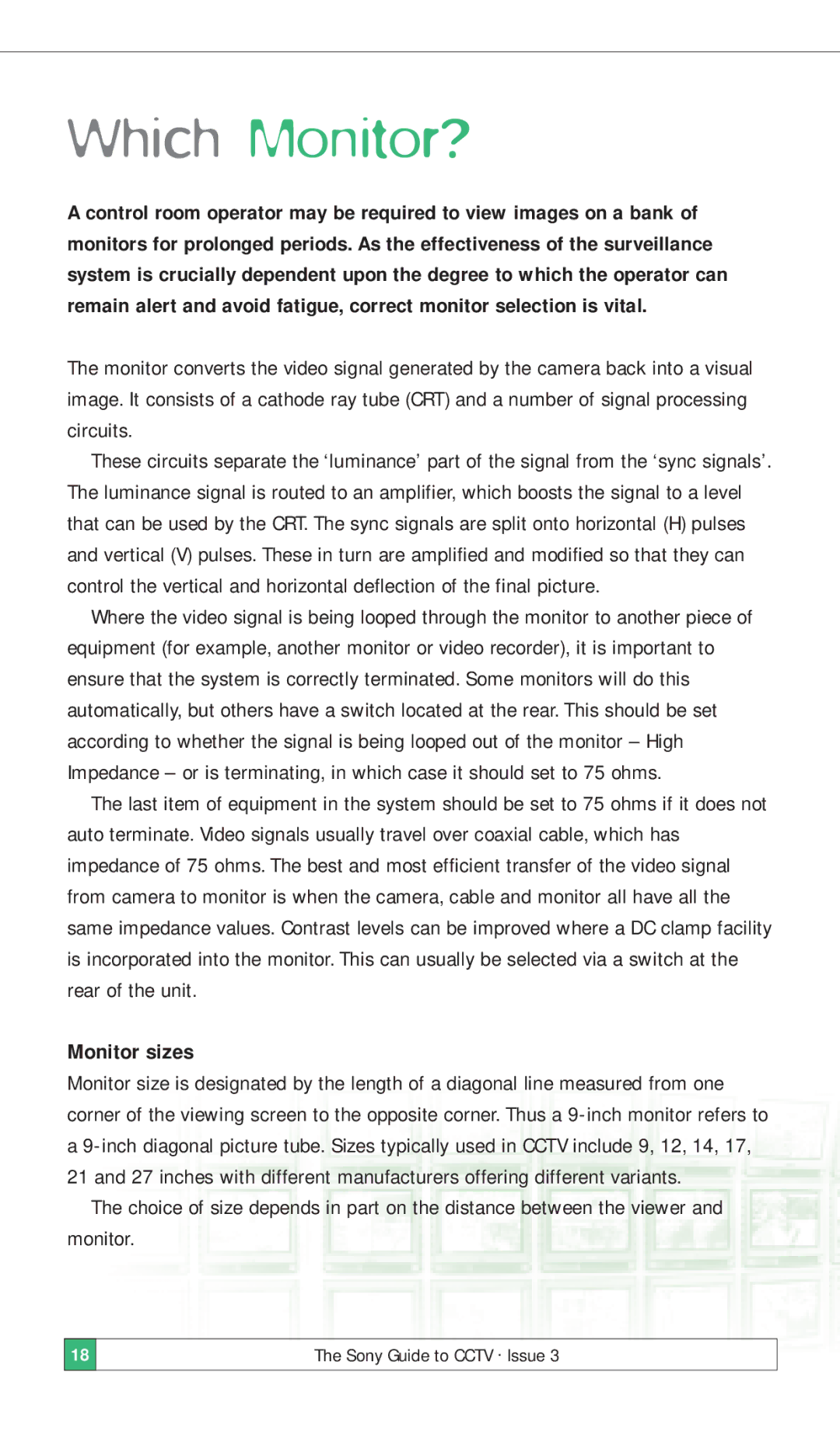
Which Monitor?
A control room operator may be required to view images on a bank of monitors for prolonged periods. As the effectiveness of the surveillance system is crucially dependent upon the degree to which the operator can remain alert and avoid fatigue, correct monitor selection is vital.
The monitor converts the video signal generated by the camera back into a visual image. It consists of a cathode ray tube (CRT) and a number of signal processing circuits.
These circuits separate the ‘luminance’ part of the signal from the ‘sync signals’. The luminance signal is routed to an amplifier, which boosts the signal to a level that can be used by the CRT. The sync signals are split onto horizontal (H) pulses and vertical (V) pulses. These in turn are amplified and modified so that they can control the vertical and horizontal deflection of the final picture.
Where the video signal is being looped through the monitor to another piece of equipment (for example, another monitor or video recorder), it is important to ensure that the system is correctly terminated. Some monitors will do this automatically, but others have a switch located at the rear. This should be set according to whether the signal is being looped out of the monitor – High Impedance – or is terminating, in which case it should set to 75 ohms.
The last item of equipment in the system should be set to 75 ohms if it does not auto terminate. Video signals usually travel over coaxial cable, which has impedance of 75 ohms. The best and most efficient transfer of the video signal from camera to monitor is when the camera, cable and monitor all have all the same impedance values. Contrast levels can be improved where a DC clamp facility is incorporated into the monitor. This can usually be selected via a switch at the rear of the unit.
Monitor sizes
Monitor size is designated by the length of a diagonal line measured from one corner of the viewing screen to the opposite corner. Thus a
The choice of size depends in part on the distance between the viewer and monitor.
18
The Sony Guide to CCTV . Issue 3
